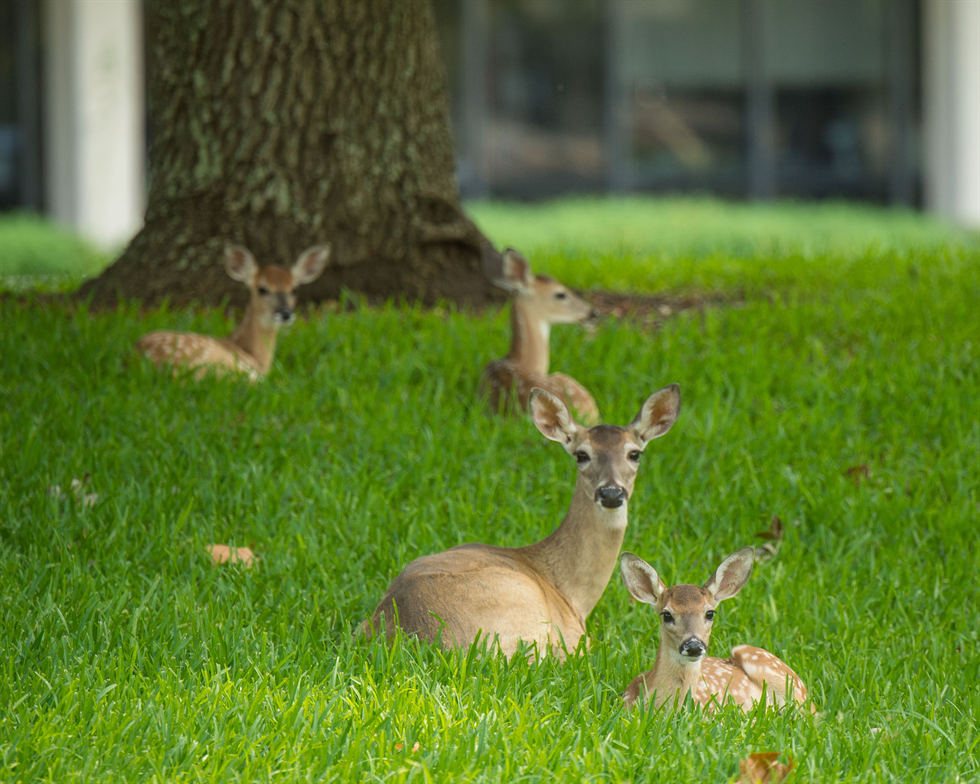A topic near and 'deer'—sustainability
White-tailed deer (Odocoileus virginianus) fawns and a doe relax under an oak tree in NASA Johnson Space Center's mall. Female white-tailed deer typically birth one or two fawns each year in the early summer. In rare cases, does may give birth to triplets, or even quadruplets. Newborn white-tailed deer are often left on their own during the day until they are large and fast enough to keep up with their mothers—usually by late summer. The fawns will nurse into the spring, and they will eventually lose their spots during their first winter. If the conditions are right, some female fawns may even breed their first fall and produce their own fawns around the time of their first birthday.
This annual cycle of deer reproduction maintains the population of white-tailed deer on-site by replacing individuals lost to predators throughout the year.
In this month's issue of Sustainability Opportunities, read about what you can do to protect various species; from the fawns on-site to the less-frequented corals in the ocean, our actions impact their survival. Take a look at upcoming events for a local film screening and plan to participate in the sustainability meeting to learn more and bring your ideas for a more efficient and sustainable Johnson.

Image Credit: NASA/Lauren Harnett







